Whether you’re looking for a portable projector for the home, office, or classroom, the Viewsonic and Epson projectors are two of the most popular choices. Both brands offer features designed to deliver superior performance at budget-friendly prices while staying within your projection needs. But which is better? This article will be comparing Viewsonic’s latest models and their signature qualities against those of an Epson projector so that you can decide which is right for your unique situation.
To help guide you through all the technical jargon and find out what’s going to make a difference in your viewing experience, this article will be taking a closer look at image quality, brightness levels, sound reproduction capabilities as well as each model’s specific features set by side.
How to pick a perfect Projector for your home and business?
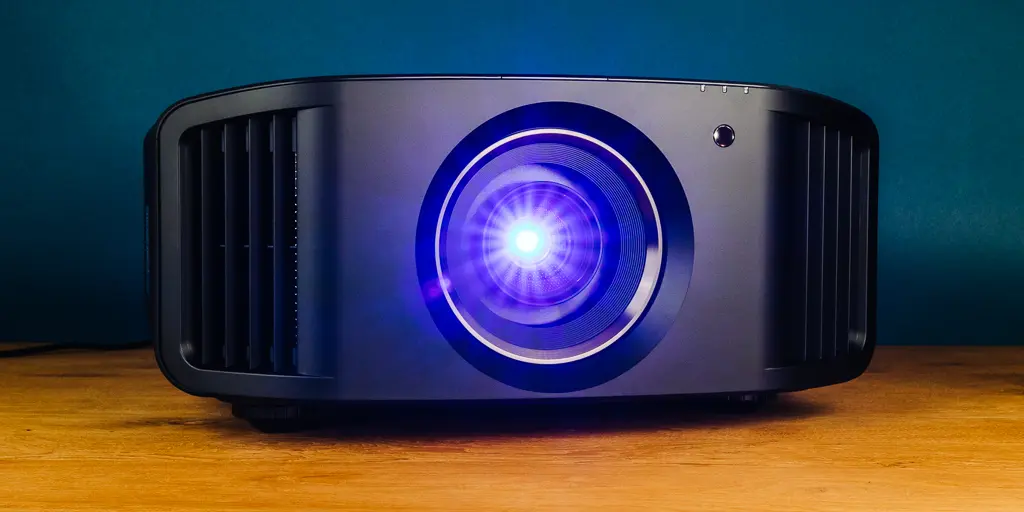
When it comes to buying a projector for your home or business, there are many aspects to consider such as budget, image quality, brightness, and portability. Here are some tips on how to choose the right projector for your needs:
- Choose the right size: Projectors come in various sizes and resolutions, so you should select one that best suits your space requirements. For larger spaces such as big auditoriums or cinemas, larger projectors with higher resolution will be needed whereas smaller rooms can get away with lower-resolution models.
- Brightness matters: The level of brightness is an important factor when choosing a projector – higher lumens (lm) give a brighter image but also cost more money. Consider how much ambient light you have in the room, as well as the size of the image you are trying to project before deciding on a brightness level.
- Quality over quantity: When it comes to resolution, go for quality over quantity. A higher resolution will ensure a sharper and more detailed image, but if your projector is not bright enough then all that pixel power won’t make any difference.
- Think about portability: If you plan on using your projector in multiple locations then you’ll need to consider its portability factor – most projectors come with built-in carrying cases these days, which makes them easier to transport from place to place.
- Compare prices and features: Once you have an idea of what kind of projector you need, compare prices and features between different models to make sure that you are getting the best value for money.
Following these simple tips should help you find the ideal projector for your home or business needs without breaking the bank. With a bit of research and careful consideration, it’s possible to get a great projector at an affordable price [1].
How to compare Viewsonic and Epson Projectors?
Projection technology
The biggest difference between Viewsonic and Epson projectors is the projection technology they use. Viewsonic projectors are DLP (digital light processing) based, while Epson relies on LCD (liquid crystal display).
DLP projectors offer higher contrast ratios, better color accuracy, faster refresh rates, and a more uniform image than LCD projectors. They also tend to be less expensive than their LCD counterparts.
However, they can suffer from “rainbow effect” issues – banding or flickering of colors in some images due to the way the image is processed by the projector – and have difficulty reproducing deep blacks.
Permission
Epson LCD projectors can produce deeper blacks and provide a more true-to-life picture with better color accuracy.
Additionally, they don’t suffer from “rainbow effect” issues, so you won’t have to worry about banding or flickering of colors in some images. However, they tend to be more expensive than DLP projectors and their refresh rates are slower.
Brightness
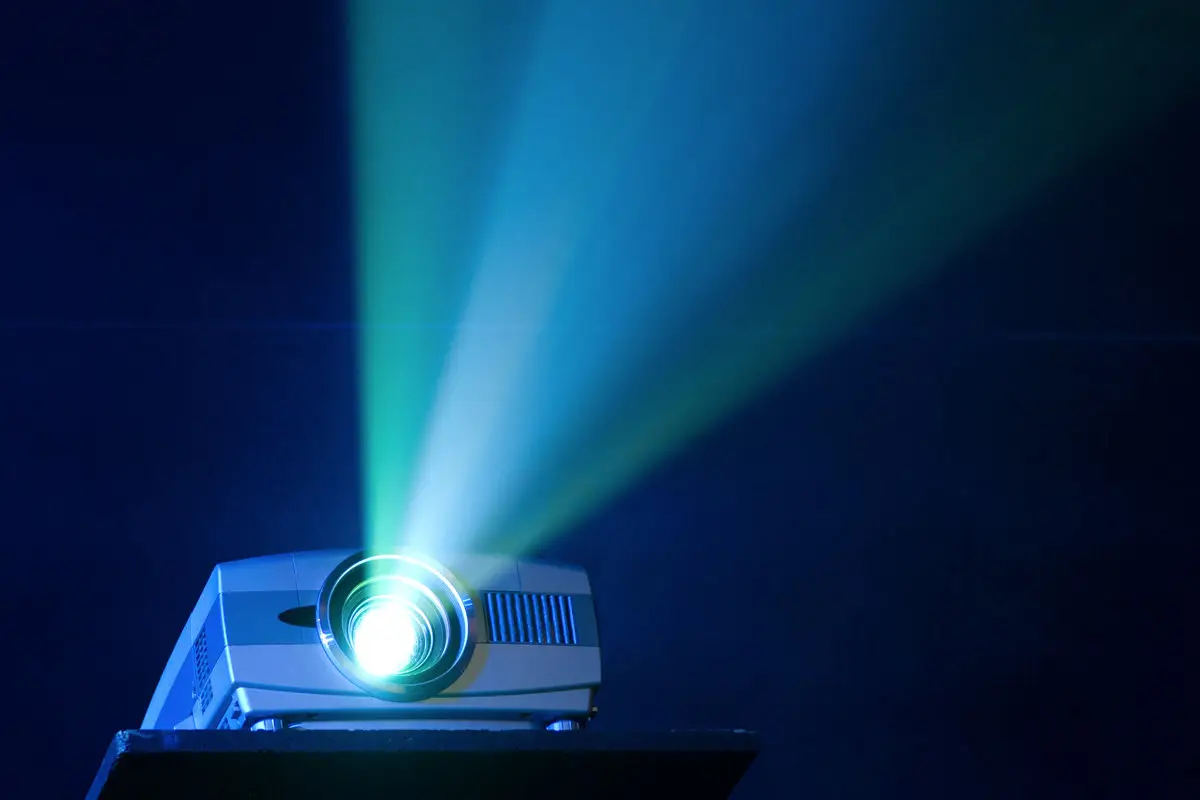
Viewsonic and Epson both offer a variety of projector models with a range of brightness levels, so it is important to compare the brightness level when selecting a projector for your specific needs. The Viewsonic, for example, has 5500 lumens of brightness while the Epson has 3300 lumens. For brighter and large environments, the Viewsonic projector would be a better choice.
Connectivity
Viewsonic projectors usually offer more connectivity options than Epson ones. The Viewsonic, for instance, has multiple connection ports including HDMI, USB Type-A, VGA, and mic/line audio jacks. On the other hand, the Epson has only one HDMI port and no other connection options. So it is important to consider what type of connections you will need when selecting between these two brands of projectors.
Aspect ratio
The aspect ratio is the ratio of the width to the height of an image or video. Both Viewsonic and Epson projectors come in a variety of aspect ratios, so it’s important to consider which one would best suit your needs before making a purchase. The Viewsonic, for example, has a 4:3 native aspect ratio while the Epson has 16:9.
3D support
Both Viewsonic and Epson projectors have 3D support, although the level of support varies between models. The Viewsonic projector, for instance, offers full 3D support while the Epson has limited 3D capabilities.
Luminous flux
Luminous flux is a measure of the total amount of visible light emitted by a projector. Both Viewsonic and Epson projectors have different levels of luminous flux, so it’s important to compare them before making a purchase decision. The Viewsonic has a higher luminous flux than the Epson, so it may be better for brighter environments.
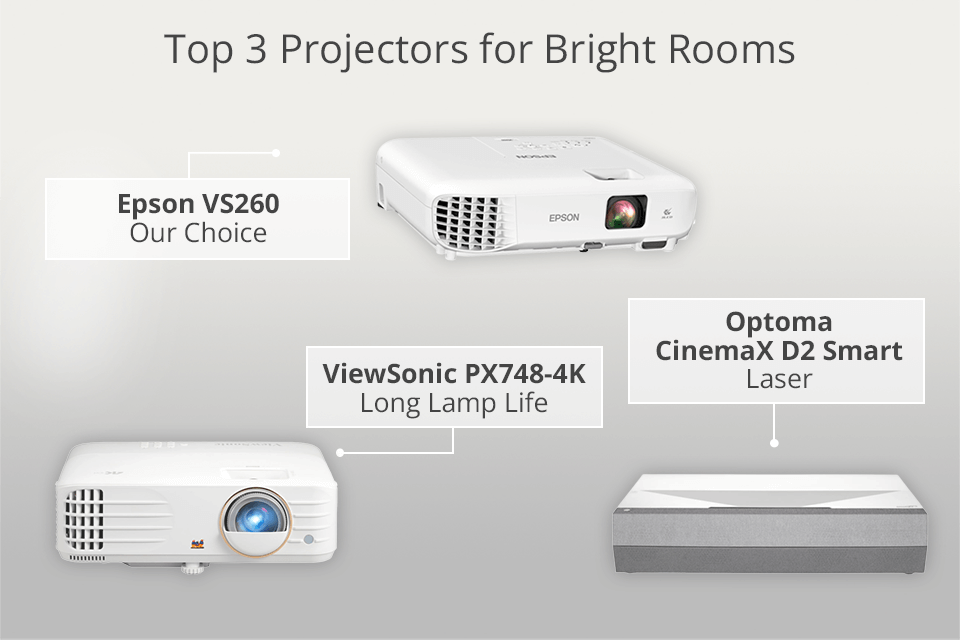
Contrast ratio
The contrast ratio is the ratio of the brightest color to the darkest color that a projector can display. Viewsonic projectors usually have better contrast ratios than Epson ones, so they may be better for darker environments.
Maximum vertical scan frequency
The maximum vertical scan frequency is the number of times per second that a projector can update the image on the screen. The Viewsonic has a higher maximum vertical scan frequency than the Epson, so it may be better for applications that require fast refresh rates.
HDR
High dynamic range (HDR) support is a feature that increases the contrast ratio and color accuracy of an image by expanding the range of colors that can be displayed. Both Viewsonic and Epson projectors offer HDR support, although the level of support varies between models.
Lamp Type
The type of lamp used in a projector can affect its performance. The Viewsonic uses LED lamps while the Epson uses traditional UHP lamps. LEDs offer better energy efficiency and longer lamp life than UHP lamps, so they may be a better option for long-term use.
Number of lamps
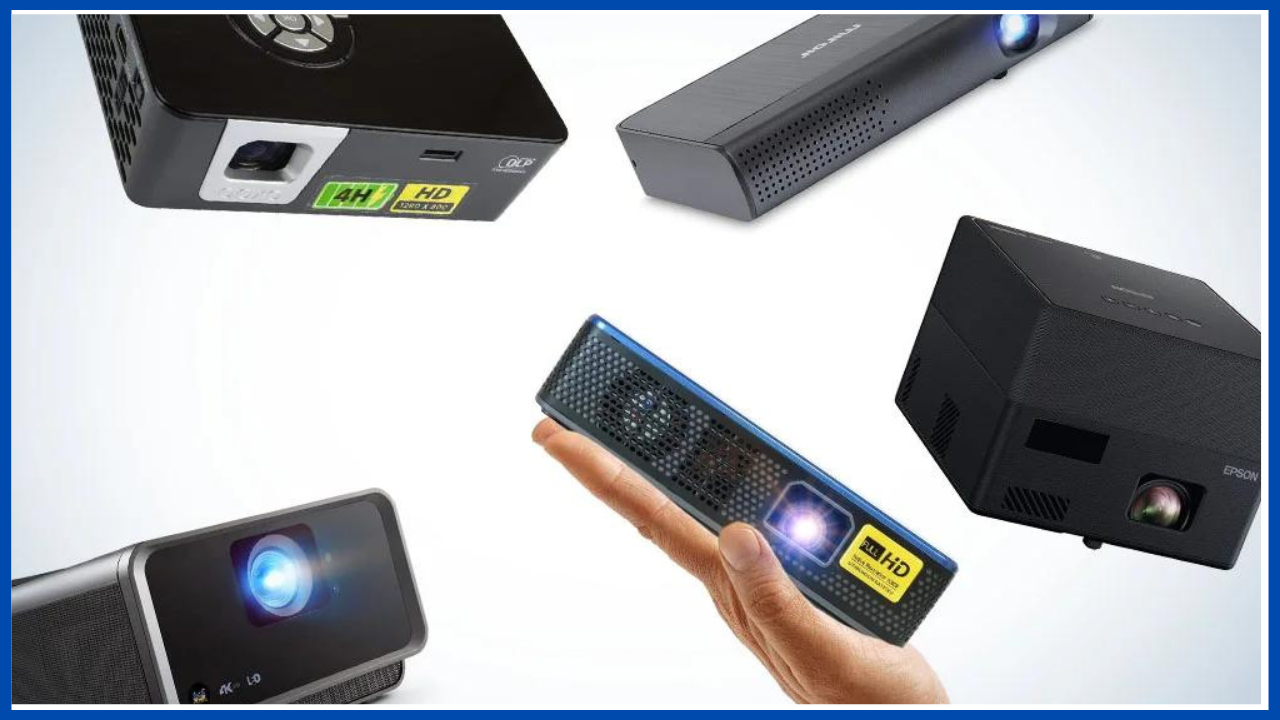
The number of lamps in a projector affects its brightness and image quality. Viewsonic projectors typically have more lamps than Epson ones, so they may be better for bright environments or larger projection areas.
Lamp life in economy mode
The lamp life in economy mode is the number of hours a projector can be used before its lamp needs to be replaced. Viewsonic projectors usually have longer lamp lives when set to economy mode than Epson ones, so they may be better for applications that require long-term use.
Lamp power
The lamp power is the amount of energy required to operate the projector’s lamp. Viewsonic projectors usually have lower lamp powers than Epson ones, so they may be better for applications that require less energy consumption. For example, if you plan to use the projector in a location with limited power resources, then it may be better to choose the Viewsonic over the Epson.
Lens Zoom
The lens zoom is the ability of the projector to change its projection size. Viewsonic projectors typically offer better lens zooms than Epson ones, so they may be better for applications that require a range of different projection sizes.
Throw ratio
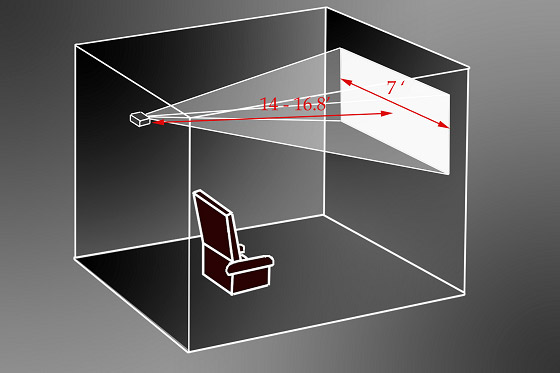
The throw ratio is the ratio of the distance from the projector to the screen to its width. Viewsonic projectors usually have higher throw ratios than Epson ones, so they may be better for applications that require larger projections from shorter distances.
Price
The price of the projector is an important factor to consider when selecting between Viewsonic and Epson models. Generally speaking, Viewsonic projectors are more expensive than Epson ones, but they also tend to offer more features and higher performance levels. So it’s important to consider your budget and what features you need when making your decision. On average, Viewsonic projectors tend to cost around $200 more than Epson ones [2].
How does Viewsonic projector work?
Viewsonic projectors use a combination of light, lenses, and circuitry to deliver an image from your device onto a large display. The projector receives the signal from your laptop or other source device and processes it into an optical projection that is then projected onto the desired surface.
The first part of the process is the focusing system which takes the information coming in from your device’s video output and precisely focuses it through its optics. This focused light beam passes through a color wheel that splits up white light into its component colors – red, green, and blue (RGB).
This is done in a way that creates an image that appears to be generated from a single source, thereby creating an impression of brightness and color fidelity.
The projector also contains other features such as zoom control and keystone correction which allow you to adjust the size and shape of the projected image for a better viewing experience.
Viewsonic projectors are designed to provide a great viewing experience no matter what type of device you’re using or where you’re placing your projector. With its combination of powerful optics and advanced circuitry, Viewsonic projectors offer brilliant visuals that make any presentation or entertainment session enjoyable.
Its line of digital projectors offers features like 3D image support, energy-saving features, and long lamp life for an enhanced viewing experience. With many options available, Viewsonic has a projector for situations or requirements.
So if you’re looking for a reliable and easy-to-use projector that provides excellent visuals, Viewsonic is the brand of choice [3]!
How to maintain Viewsonic and Epson Projectors?
To ensure the best performance and long life of your Viewsonic and Epson projectors, the following maintenance tips should be followed:
- Cleaning – Make sure to regularly clean the projector lens, air filter, and any other exposed parts of the device. Use a soft cloth or brush to gently remove any dust or debris buildup. Be sure not to use harsh chemicals, as these can damage the projector’s internal components.
- Proper Storage – When not in use, store your projector in a cool, dry place away from direct sunlight and moisture. Also, keep it free from dust by covering it with a cloth when storing it for extended periods.
- Regular Maintenance – Follow all manufacturer instructions for regular maintenance of your projector. This includes checking the air filter and lamp periodically, as well as calibrating any settings that may need to be adjusted.
- Check Connections – Make sure all connections are properly secured and up-to-date when using your projector. This will help to ensure that you don’t experience any unexpected connection issues during use.
- Perform Regular Updates – Be sure to update your projector’s software and firmware regularly, as this can help prevent any technical issues from occurring while using it.
By following these tips, you can ensure the best performance and long life of your Viewsonic or Epson projectors!
FAQ
Is ViewSonic a good brand for projectors?
ViewSonic is a well-known brand in the projector market and has been producing high-quality projectors for decades. They offer a wide range of models for personal, business, or educational use.
Many people have reported that ViewSonic projectors are reliable and provide good image quality. With their long track record of producing dependable products, it’s no surprise that ViewSonic remains one of the most popular choices for home theater systems.
In addition to offering great value with their lower-priced projectors, they also have higher-end models designed to compete in the ultra-high performance bracket. You can rest assured that when you purchase a ViewSonic projector, you will be getting a product backed by years of experience and expertise in the industry.
What type of input does a ViewSonic projector accept?
ViewSonic projectors typically accept several types of inputs, including HDMI, VGA, DVI-D/HDMI, Composite Video/Audio RCA, S-Video, and Component Video/Audio RCA. For convenience, some models support wireless connectivity with compatible devices such as laptops, tablets, and smartphones.
Why are Epson projectors the best?
Epson is a leader in the projector market and provides some of the best projectors available. Their products feature robust build quality, excellent image clarity and color accuracy, flexible setup options, and advanced features such as lens shift, motorized zoom/focus adjustments, edge blending, and more.
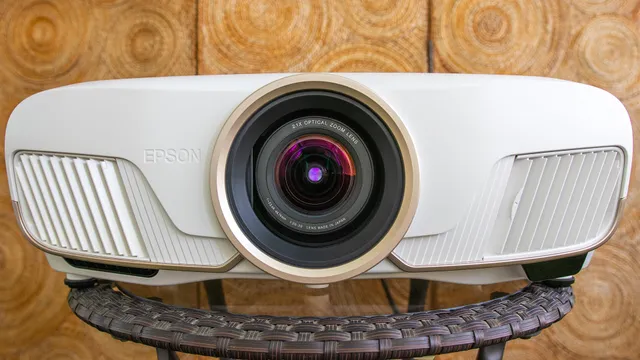
Epson projectors also come with sophisticated 3LCD technology that offers smooth transitions between colors for superior contrast ratios. They have different models to suit every need from home theater systems to corporate presentations. Epson’s after-sales support is also top-notch so you can rest assured that your projector will be well taken care of.
Does ViewSonic make the best projectors?
ViewSonic is a popular brand for projectors and offers some excellent models for home theater or business use. Their projectors come with advanced features such as 3D support, picture-in-picture, motorized lens shift, color management, etc. They are known for their value and reliability so you can expect good performance from ViewSonic products.
However, it’s important to note that there are other brands out there with equally impressive offerings. For example, Epson is one of the most reputable projector manufacturers in the market today and provides an excellent selection of technologically advanced models.
Ultimately it comes down to personal preference as both companies offer great options when it comes to projectors.
Which is better, ViewSonic or BenQ?
Both BenQ and ViewSonic are well-known projector brands and offer some great models. Ultimately it comes down to personal preference as both companies have their strengths when it comes to projectors.
ViewSonic is known for its reliability, value, and customer support while BenQ has a wide range of projectors with advanced features such as 4K resolution, motorized lens shift, edge blending etc. Both brands also provide good warranty coverage so you can rest assured that your projector will be backed up in case anything goes wrong.
Why are ViewSonic projectors expensive?
ViewSonic projectors are typically more expensive than other brands because they use high-quality components and offer advanced features. They also have a long track record of producing dependable, reliable products which is why many people trust them for their home theater system or business presentations.
In addition to offering great image quality and performance, ViewSonic provides excellent customer support, flexible setup options, and good warranty coverage. This makes them a great value even though their prices may be higher than other brands.
What is the difference between BenQ and Epson projectors?
Both BenQ and Epson are popular projector brands that offer excellent models for home theater systems or business settings.
BenQ offers projectors with advanced features such as 4K resolution, motorized lens shift, edge blending, etc. while Epson provides 3LCD technology which helps deliver smooth transitions between colors for superior contrast ratios.
What is ViewSonic equivalent to?
ViewSonic is a popular brand for projectors and offers some excellent models for home theater or business use. They provide features such as 3D support, picture-in-picture, motorized lens shift, color management, etc. Their projector quality and value are comparable to Epson and BenQ which also produce reliable products with advanced features.
Ultimately it comes down to personal preference as all three companies have their strengths when it comes to projectors.
What is the best projector under $500?
The best projector under $500 would depend on your needs and preferences. There are many different options available in this price range from brands such as ViewSonic, BenQ, Epson, Optoma, and more.
For example, ViewSonic has the PX700HD which offers 3D support and a full HD resolution for under $500. BenQ also offers the W1070+ with 1080p resolution and several features such as motorized lens shift, edge blending, etc. Epson’s EX9220 is another option within this price range that provides excellent picture quality with 4K enhancement technology.
Ultimately it comes down to personal preference as all three companies offer great projectors within this price range.
Which is better, Samsung or ViewSonic?
Both Samsung and ViewSonic are well-known brands when it comes to projectors. Ultimately, it comes down to personal preference as both companies provide excellent models with a range of features and options.
Samsung is known for its innovative technology and good value while ViewSonic provides reliable products with great customer support. They also offer different types of projectors such as short throw, ultra short throw, laser, or LED depending on what you need.
How long does a ViewSonic projector last?
ViewSonic projectors are designed to last for many years of use. The average lifespan of a projector is around 10,000-20,000 hours and ViewSonic projectors typically have a rated lamp life of around 5000-6000 hours. This means that with proper maintenance and care, you can expect your ViewSonic projector to last up to 5 years or more depending on how often you use it.
In addition, most ViewSonic models come with a 3-year warranty so if anything goes wrong during this period, they will be able to assist in fixing or replacing the projector as needed.
Is LG or ViewSonic better?
Both LG and ViewSonic are well-known brands when it comes to projectors. Ultimately, it comes down to personal preference as both companies provide excellent models with a range of features and options. LG is known for its innovative technology such as Active HDR, 4K UHD resolution, and auto-calibration while ViewSonic provides advanced features like edge blending and motorized lens shift along with great customer support.
They also offer different types of projectors such as short throw, ultra short throw, laser, or LED depending on what you need. Ultimately, which projector brand you choose should depend on your needs and budget. Both LG and ViewSonic offer reliable products so either one would make a great choice.
What company owns ViewSonic?
ViewSonic is a private company that was founded in 1987. They are headquartered in Walnut, California, and owned by the Envision Peripherals Incorporation (EPI). EPI is part of the BenQ Group which consists of several companies including BenQ, Vivitek, Au Optronics, and more.
ViewSonic produces a range of products such as monitors, projectors, digital signage solutions, etc. Their goal is to provide customers with reliable products and innovative technology at an affordable price. They have become one of the leading brands when it comes to home theater projectors and professional display solutions.
The company has continued to grow over the years due to their commitment to quality and customer service.
Useful Video: DLP Viewsonic PX747-4K UHD vs LCD Epson EH-TW7100 4K Pro-UHD
Conclusion Paragraph
Viewsonic or Epson Projectors? Both Viewsonic and Epson projectors are great options for those looking to upgrade their home theater setup. Viewsonic projectors offer a variety of features at an affordable price point, including 4K resolution, HDR compatibility, and more. On the other hand, Epson projectors have good brightness levels, provide excellent color accuracy and vibrancy, as well as being compatible with most devices.
Ultimately, which projector you should choose depends on which features you want and how much money you’re willing to spend. For those who prioritize image quality above all else or are working within a tighter budget, Viewsonic is the clear choice while those seeking something brighter should consider going with Epson.
References
- https://www.nytimes.com/wirecutter/blog/how-to-pick-the-right-projector/
- https://pointerclicker.com/projector-epson-vs-viewsonic/
- https://www.viewsonic.com/library/entertainment/smart-projector/

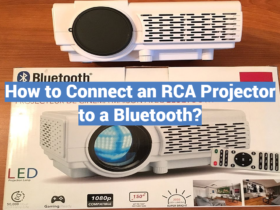
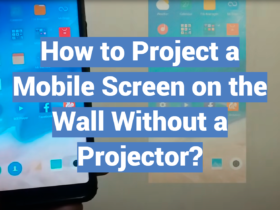

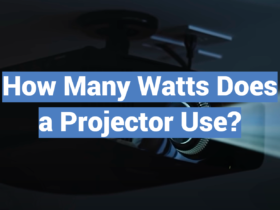
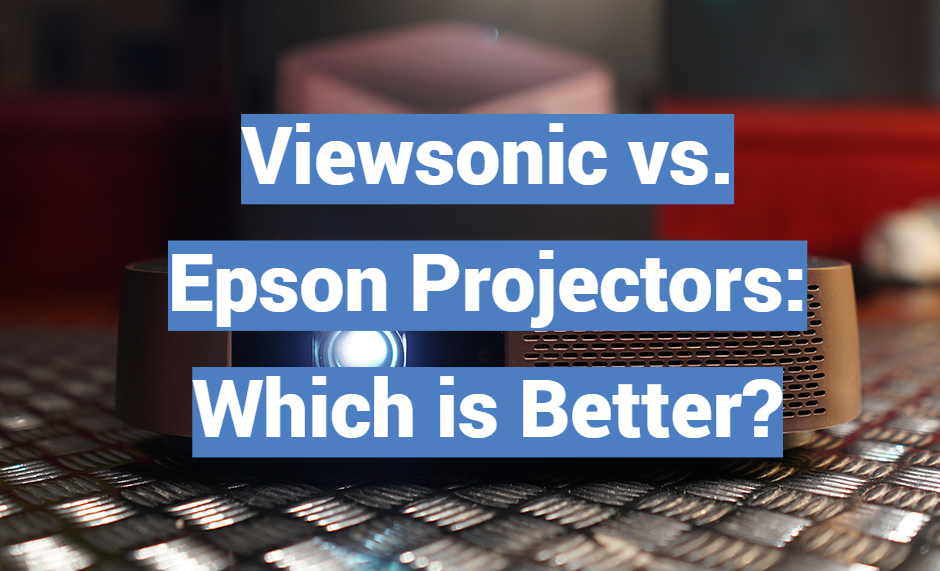
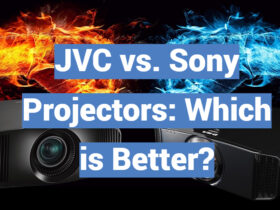
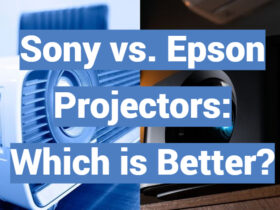
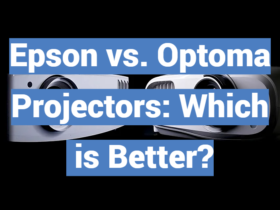
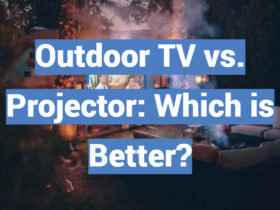
Leave a Review